Kraków, Lesser Poland 作者: 来源: 发布时间:2021-03-04
Ⅰ. Population and Area
Country Poland
Lesser Poland
Area: 126.18 sq miles
Population: 779,115 (2019)
Population (31 December 2019)
• City 779,115 Increase (2nd)
• Density 2,359/km2 (6,110/sq mi)
• Metro 1,725,894
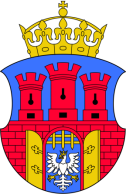
Website www.krakow.pl
Ⅱ.Natural Geography (environment and resources)
Kraków lies in the southern part of Poland, on the Vistula River, in a valley at the foot of the Carpathian Mountains, 219 m (719 ft) above sea level; halfway between the Jurassic Rock Upland (Polish: Jura Krakowsko-Częstochowska) to the north, and the Tatra Mountains 100 km (62 mi) to the south, constituting the natural border with Slovakia and the Czech Republic; 230 km (143 mi) west from the border with Ukraine.
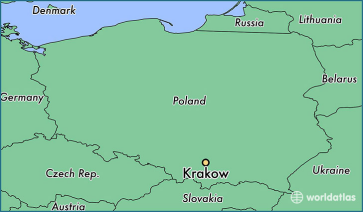
There are five nature reserves in Kraków, with a combined area of ca. 48.6 hectares (120 acres). Due to their ecological value, these areas are legally protected. The western part of the city, along its northern and north-western side, borders an area of international significance known as the Jurassic Bielany-Tyniec refuge. The main motives for the protection of this area include plant and animal wildlife and the area's geomorphological features and landscape. Another part of the city is located within the ecological 'corridor' of the Vistula River valley. This corridor is also assessed as being of international significance as part of the Pan-European ecological network. The city centre is situated on the left (northern) bank of the river.
Transport
Public transport is based on a fairly dense network of tram and bus routes operated by a municipal company, supplemented by a number of private minibus operators. Local trains connect some of the suburbs. The bulk of the city's historic area has been turned into a pedestrian zone with rickshaws and horse-drawn carriages; however, the trams run within a three-block radius. The historic means of transportation in the city can be examined at the Museum of Municipal Engineering in the Kazimierz district, with many old trams, cars and buses.
Railway connections are available to most Polish cities, e.g. Katowice, Częstochowa, Szczecin, Gdynia and Warsaw. International destinations include Bratislava, Budapest, Vienna, Prague, Berlin, Hamburg, Lviv, Kiev, and Odessa (June–September).[144] The main railway station is located just outside the Old Town District and is well-served by public transport.
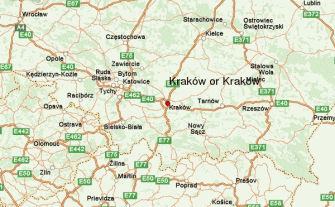
Kraków's airport, officially named Kraków John Paul II International Airport (IATA: KRK), is located 11 km (7 mi) west of the city. Direct trains cover the route between Kraków Główny train station and the airport in 20 minutes. Kraków Airport served around 5,800,000 passengers in 2017. Also, the Katowice International Airport is located 80 kilometres (50 miles) or about 75 minutes from Kraków.
In Autumn 2016 Poland's oldest Bicycle-sharing system was modernized and now offers 1,500 bikes at 150 stations under the name of Wavelo (pl), which is owned by BikeU of the French multinational company Egis.
Ⅲ.Economy
Kraków is one of Poland's most important economic centres and the economic hub of the Lesser Poland (Małopolska) region.Since the fall of communism, the private sector has been growing steadily. There are about 50 large multinational companies in the city, including Google, IBM, Royal Dutch Shell, UBS, HSBC, Motorola, Aptiv, MAN SE, General Electric, ABB, Aon, Akamai, Cisco Systems, Hitachi, Philip Morris, Capgemini, and Sabre Holdings, along with other British, German and Scandinavian-based firms. The city is also the global headquarters for Comarch, a Polish enterprise software house. In 2005, foreign direct investment in Kraków has reached approximately US$3,500,000,000. Kraków has been trying to model itself as a European version of Silicon Valley, based on the large number of local and foreign hi-tech companies. The unemployment rate in Kraków was 4.8% in May 2007, well below the national average of 13%. Kraków is the second most-visited city in Poland (after Warsaw). According to the World Investment Report 2011 by the UN Conference for Trade and Development (UNCTAD), Kraków is also the most emergent city location for investment in global BPO projects (Business Process Outsourcing) in the world.
-In 2011, the city budget, which is presented by the Mayor of Kraków on 15 November annually, has projected revenue of 3,500,000,000 złoty. The primary sources of revenue were as follows: 14% from the municipal taxation on real estate properties and the use of amenities, 30% in transfers from the national budget, and 34% in state subsidies. Projected expenditures, totaling 3,520,000,000 złoty, included 21% in city development costs and 79% in city maintenance costs. Of the maintenance costs, as much as 39% were spent on education and childcare. The City of Kraków's development costs included; 41% toward construction of roads, transport, and communication (combined), and 25% for the city's infrastructure and environment. The city has a high bond credit rating, and some 60% of the population is under the age of 45.
Kraków’s total budgetary income in 2005 amounted to PLN 2 billion, which is among the highest in Poland. But the income per capita was relatively low, as well as the city’s own income per inhabitant. However, the share of investments in the city’s expenses was relatively high - the result was 19% (compared to the average of 17%). With the average level of 100 for the 7 cities, SFC in Kraków in terms of the city’s own resources is 91.
Ⅳ.Industrial Characteristics
Standard & Poor's rates the city of Krakow BBB+. Krakow is Poland’s fourth biggest manufacturing center, with steel, tobacco and pharmaceuticals being the key industries. At the same time the city is second only to the capital Warsaw as regards the service sector. On top of being the country’s prime tourist destination it boasts headquarters of 6 banks, 15 major institutions of higher education, and plethora of consultants, stockbrokers, etc. Krakow is also home to many of Poland's leading software firms. In the last decade the city has become the world's major outsourcing destination.
Krakow Attractions: have good time in the city of many joys http://www.krakow-info.com/attract.htm
It’s said that 10% of Krakow’s GNP comes from the tourism industry. It’s over 4.5 billion PLN. According to the submission “Tourism business” by the Statistical Office, in 2014 there were over 15 thousand active business entities. Majority, over 31.5% of them belong to transport industry. Restaurants comprise 21.8%, retail outlets 20.7%, travel agencies and guides 20.7%. The bulk of entities, over 96% of are those employing up to 9 people. Companies employing over 49 people make only 0.4%
Hard life of handicraft and retail business
Tourism industry employs about 38,000 citizens. Most of them work in restaurants, cultural venues or for companies offering souvenirs and handicraft. The average salary in enterprise sector in 2014 was 4092 PLN gross. In the tourism industry, it was over one thousand less, approximately 3,000 PLN. According to data of the Statistical Office (GUS), it is the entities from the transport industry (91.8%) that stand the biggest chance of survival in the first year of their business activity. On the other hand, handicraft and retail business stand the least chance (76.6%). During the following years of activity, the situation of the handicraft industry and retail doesn’t improve, neither does for the catering branch. Transport companies, the accommodation industry as well as travel agencies and guides get the best deal.
What is the impact of Tauron Arena Kraków?
During the first half of the year, there were 802 accommodation facilities in Kraków, including 434 hotels and 303 unclassified venues. Hostels in the city centre are still prevailing. In the years 2012-2014 companies in the tourism industry in Kraków were really beneficial. Record profits were reported in the second half of 2013, the lowest in the first half of 2012. The most beneficial were accommodation facilities.
“For Kraków, tourism was, is and will be the driving force of economic growth and we have to do everything to maintain the attractiveness of the city. About 10.2% of the GNP of Kraków is generated by the tourism industry,” said Krzysztof Jakóbik, director of the Statistical Office. He announced that Statistical Office is about to do research on how openings of Tauron Arena Kraków and ICE Kraków Congress Centre impact on tourism development. “We can expect that these facilities have a significant impact on the attractiveness of the city, especially for the business tourism as well as cultural and sport events” he added.
Who, from where and how they arrive
According to research done by Malopolska Tourism Organization, 9.9 million tourists visited Kraków in the last year and spent a total of 4.5 billion PLN. The vast majority of foreign guests were from Great Britain (17.1%), however the amount of British tourists in Kraków decreases. The second place belongs to Germans (16.5%), the number of German tourists increases. Next are Spaniards (10.8%), Italians (10.2%), French (7.10%), Ukrainians (4.5%) and Americans (4.3%). The number of Russian tourists decreases (from 6.7 to 2.9% in 2013 alone) while the number of tourists coming from China, Korea (from 0.2 to 0.9%) and the Netherlands (from 1.5 to 2.9%) is still growing.
The bulk of native guests come from Lesser Poland (18.2%), Silesia Province (13.7%) and the Mazovian Province (12%).
Over 53% of guests choose the plane as a means of transport. Native tourists travel mostly by car (over 45%). Guests the most often choose accommodation in a hotel (47% foreign guests and 20% natives) or in a hostel (almost 15% foreigners and 13% natives).
An average of 846 PLN per person
It was calculated that tourists spent about 4.5 billion PLN in Kraków this year (excluding travel and accommodation expenses). It’s 300 million less than last year. Foreign guests spent about 846 PLN per person and native guests about 310 PLN. The loss is caused by the change of the age structure of tourists, a drop in time spent in Kraków and a decrease in the amount of money spent by Russian and Israeli tourists.
The main goals for tourists while visiting Kraków were: to sightsee, to relax, to visit family and friends, to entertain themselves, or to travel. They also come to Kraków for religion-related purposes. Wawel Castle is said to be the biggest attraction of the city. Other attractive places are Sukiennice, Main Market Square, Kazimierz Old Jewish Quarter, St. Mary’s Church, Rynek Underground, the Vistula Boulevards and Oscar Schindler’s Enamel Factory.
https://www.local-life.com/krakow/news/1678-where-and-how-tourists-spend-money-in-krakow
Key Project
1.Real estates in Krakow
Krakow is the second most important real estate market in Poland (after Warsaw, the country's capital city) and the most attractive city to live in. Foreign investors have snapped up about 70 percent of flats for sale in the most attractive Old Town central district or close to it.
As regards residential property Krakow’s quality apartments in a decent neighborhood sell at euro 2,150 or so per square meter, while flats in Krakow at the market’s lower end cost even a third of that. An average price of a new flat at the Old Town hovers around 3,550 euro per square meter, compared to euro 1,900 elsewhere in downtown Krakow, and under 1,500 in Nowa Huta district. Three-bedroom houses are priced anything between euro 120,000 and 600,000 accordingly to their quality, state of repair, location, etc. And you may have a downtown tenement house for a couple of millions euro or even a centuries-old palace in the historical city center for ten million euro or so.
As regards residential land building lots in Krakow sell on average at euro 89 per square meter but there is a wide range: from roughly 40 euro on the outskirts of the city to 1000-plus euro in most attractive neighborhoods. And land prices in the very city center may look exorbitant indeed. Commercial land in averages euro 500 in downtown Krakow and EUR 175 in the outskirts.
Beyond the city limits building plots cost between 150 euro and 400 euro per square meter. Farmland prices in the Krakow region average euro 2,500 per hectare.
Krakow is also a rewarding market for commercial property, from retail to office to industrial facilities.
Krakow Business Info http://www.krakow-info.com/business.htm
2. Kraków gallery opens online show of Beksiński paintings
Kraków gallery opens online show of Beksiński paintings – The First News https://www.thefirstnews.com/article/krakow-gallery-opens-online-show-of-beksinski-paintings-12426
3. ArcelorMittal to restart Polish steel plant in March,2020
ArcelorMittal to restart Polish steel plant in March | Nasdaq https://www.nasdaq.com/articles/arcelormittal-to-restart-polish-steel-plant-in-march-2020-02-03
4. Krakow special economic zone may expand
The Krakow Special Economic Zone may expand an additional 74 hectares to include parts of Niepołomice, Nowe Brzesko, Szczurowa, and Babice, Radio Krakow reports.
The SEZ is managed by the Krakow Technology Park, which applied to the Lesser Poland Voivodeship for the expansion. They want the new area to operate under old rules which would give businesses there a 15-year tax exemption (rather than the current 12).
According to the applicants, the project would create new jobs and around 578 million PLN in investment opportunities. The tax breaks would cost almost 260 million PLN in lost revenue.
Krakow special economic zone may expand – The Krakow Post http://www.krakowpost.com/20197/2019/04/krakow-special-economic-zone-may-expand
5. Driverless tram tested in Krakow
In what one organizer called “a song of the future,” the city of Krakow tested a driverless tram late on the evening of January 27th.
The tram is controlled by a computer which automatically directs the train between designated stops based on its satellite positioning. In the test, launched by Krakow mayor Jacek Majchrowski, the vehicle traveled from the National Museum to the Cichy Kącik.
There are some fail-safes in the event of computer error. A driver was stationed in the tram ready to take the controls, and the tram would automatically stop if someone pulled the emergency brake or opened a door. However, on the test ride there were no mishaps.
The system was designed by the Newag railway company using software by fellow Polish firm Cybid, in collaboration with the Faculty of Mechanical Engineering of the Krakow University of Technology and MPK (Krakow’s public transport authority).
Despite the successful test, don’t expect to ride a driverless tram through Krakow anytime soon: the law still does not allow autonomous vehicles in regular traffic. The planners initially hope to utilize the technology to merely assist human drivers with their duties. The next phase of development will include the development of an obstacle detection system and better guidance through traffic.
Driverless tram tested in Krakow – The Krakow Post http://www.krakowpost.com/22196/2020/01/driverless-tram-tested-in-krakow
Ⅴ.Attrations and Cityscape
According to official statistics, in 2019 Kraków was visited by over 14 million tourists including 3.3 million foreign travellers. The visitors spent over 7.5 billion złoty (ca. €1.7 billion) in the city (without travel costs and pre-booked accommodation). Most foreign tourists came from Germany (14.2%), United Kingdom (13.9%), Italy (11.5%), France (11.2%), Spain (10.4%) and Ukraine (5.4%). The Kraków tour-guide from the Lesser Poland Visitors Bureau indicated that not all statistics are recorded due to the considerable number of those who come, staying in readily available private rooms paid for by cash, especially from Eastern Europe.
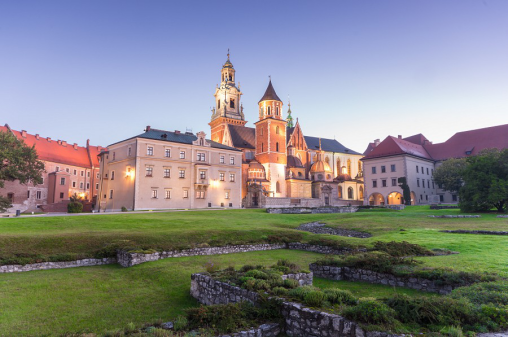
Wawel Castle
Kraków's historic centre, which includes the Old Town, Kazimierz and the Wawel Castle, was included as the first of its kind on the list of UNESCO World Heritage Sites in 1978. The Stare Miasto is the most prominent example of an old town in the country. For many centuries Kraków was the royal capital of Poland, until Sigismund III Vasa relocated the court to Warsaw in 1596. The whole district is bisected by the Royal Road, the coronation route traversed by the Kings of Poland. The Route begins at St. Florian's Church outside the northern flank of the old city-walls in the medieval suburb of Kleparz; passes the Barbican of Kraków (Barbakan) built in 1499, and enters Stare Miasto through the Florian Gate. It leads down Floriańska Street through the Main Square, and up Grodzka to Wawel, the former seat of Polish royalty, overlooking the Vistula River. Old Town attracts visitors from all over the World. Kraków historic centre is one of the 13 places in Poland that are included in the UNESCO World Heritage Sites. The architectural design of the district had survived all cataclysms of the past and retained its original form coming from the medieval times. The Old Town of Kraków is home to about six thousand historic sites and more than two million works of art. Its rich variety of heritage architecture includes Romanesque (e.g., St. Andrew's Church, Kraków), Gothic, Renaissance and Baroque buildings. Kraków's palaces, churches, theatres and mansions display great variety of color, architectural details, stained glass, paintings, sculptures, and furnishings.
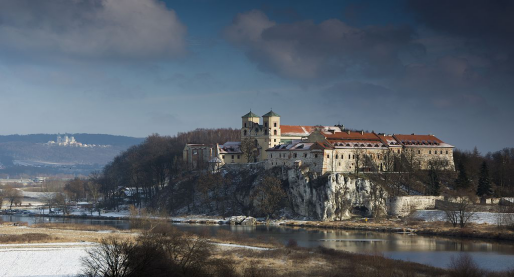
Benedictine Tyniec Abbey
Ⅵ.History and Culture
Kraków's early history begins with evidence of a Stone Age settlement on the present site of the Wawel Hill. A legend attributes Kraków's founding to the mythical ruler Krakus, who built it above a cave occupied by a dragon, Smok Wawelski. The first written record of the city's name dates back to 965, when Kraków was described as a notable commercial centre controlled first by Moravia (876–879), but captured by a Bohemian duke Boleslaus I in 955. The first acclaimed ruler of Poland, Mieszko I, took Kraków from the Bohemians and incorporated it into the holdings of the Piast dynasty towards the end of his reign.
In 1038, Kraków became the seat of the Polish government. By the end of the 10th century, the city was a leading centre of trade. Brick buildings were constructed, including the Royal Wawel Castle with St. Felix and Adaukt Rotunda, Romanesque churches such as St. Adalbert's, a cathedral, and a basilica. The city was sacked and burned during the Mongol invasion of 1241. It was rebuilt practically identical, based on new location act and incorporated in 1257 by the high duke Bolesław V the Chaste who following the example of Wrocław, introduced city rights modelled on the Magdeburg law allowing for tax benefits and new trade privileges for the citizens. In 1259, the city was again ravaged by the Mongols. A third attack in 1287 was repelled thanks in part to the new built fortifications. In 1335, King Casimir III of Poland (Kazimierz in Polish) declared the two western suburbs to be a new city named after him, Kazimierz (Casimiria in Latin). The defensive walls were erected around the central section of Kazimierz in 1362, and a plot was set aside for the Augustinian order next to Skałka. The city raised to prominence in 1364, when Casimir III of Poland founded the University of Kraków, the second oldest university in central Europe after the Charles University in Prague. King Casimir also began work on a campus for the Academy in Kazimierz, but he died in 1370 and the campus was never completed. The city continued to grow under the joint Lithuanian-Polish Jagiellon dynasty. As the capital of the Kingdom of Poland and a member of the Hanseatic League, the city attracted many craftsmen, businesses, and guilds as science and the arts began to flourish. The royal chancery and the University ensured a first flourishing of Polish literary culture in the city.
Culture
Kraków was named the official European Capital of Culture for the year 2000 by the European Union. It is a major attraction for both local and international tourists, attracting nearly 13 million visitors a year. Major landmarks include the Main Market Square with St. Mary's Basilica and the Sukiennice Cloth Hall, the Wawel Castle, the National Art Museum, the Zygmunt Bell at the Wawel Cathedral, and the medieval St. Florian's Gate with the Barbican along the Royal Coronation Route. Kraków has 28 museums and public art galleries. Among them is the Czartoryski Museum featuring works by Leonardo da Vinci and Rembrandt as well as the EUROPEUM - European Culture Centre and the Archaeological Museum of Kraków whose collection highlights including the Zbruch Idol and the Bronocice Pot.
Ⅶ.Other Information
The name of Kraków is traditionally derived from Krakus (Krak, Grakch), the legendary founder of Kraków and a ruler of the tribe of Lechitians. In Polish, Kraków is an archaic possessive form of Krak and essentially means "Krak's (town)". Krakus's name may derive from "krakula", a Proto-Slavic wordmeaning a judge's staff, or from "krak", a Proto-Slavic word meaning an oak, once a sacred tree most often associated with the concept of genealogy. The first recorded mention of Prince Krakus (then written as Grakch) dates back to 1190, although the town existed as early as the 7th century, when it was inhabited by the tribe of Vistulans.
The city's full official name is Stołeczne Królewskie Miasto Kraków,[18] which can be translated as "Royal Capital City of Kraków". In English, a person born or living in Kraków is a Cracovian (Polish: krakowianin or krakus). While in the 1990s the English version of the name was often written Cracow, the most widespread modern English version is Krakow.
VIII.Contact Information
Mayor Jacek Majchrowski
Office address of the City President (mayor) as well as the City Council is: 3/4 Wszystkich Swietych Pl.
Postal address: Urzad Miasta Krakowa, Pl. Wszystkich Swietych 3/4, 31-004 Krakow, Poland.
Telephone number of the mayor's office is (+48) 126161398 and (+48) 126161350.
Mayor's email address is Jacek.Majchrowski@um.krakow.pl
